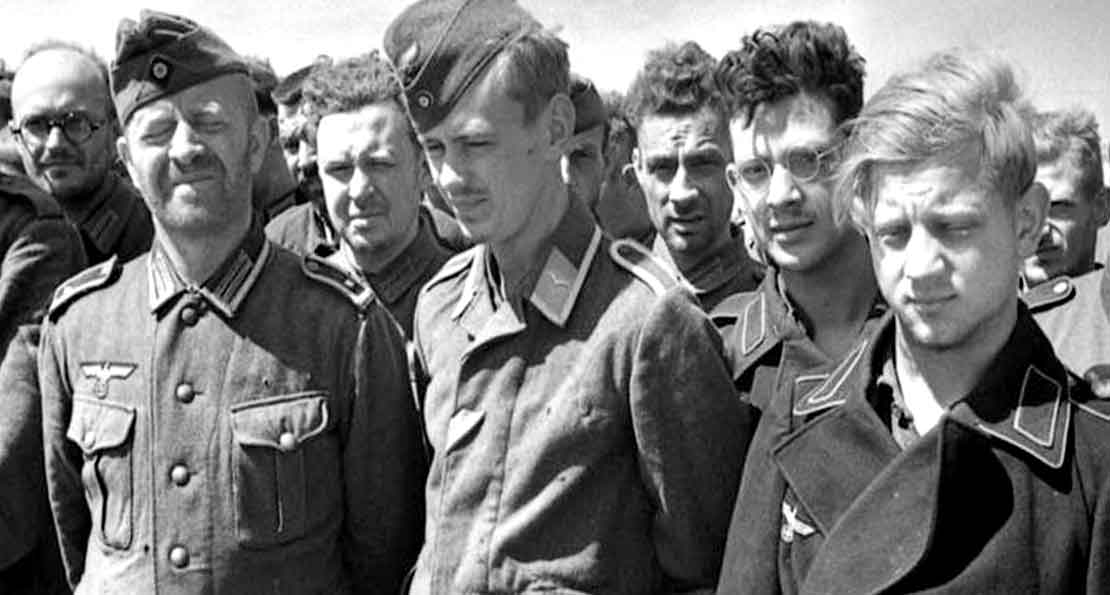Mistakes made by the Germans when they surrendered to the Red Army.
According to the NKVD, nearly 3 million German soldiers and officers and about 760,000 German Allied military personnel were captured by Red Army soldiers during the Great Patriotic War.
---
But far more people want to surrender. But in combat, due to some mistakes, not everyone can do this. There were cases where Red Army soldiers killed captured Germans out of hatred for their mediocrity, and there were also cases where those who had laid down their arms and raised their hands in battle were also killed. A German could also kill a man who was ready to surrender because he did not clearly express this preparation, or did not follow some simple rules.
The first action of surrender in battle is to throw the weapon aside, raise your hands, stand at your full height, and shout "surrender" loudly and clearly. But due to the lack of knowledge of the Russian language, this is not for everyone. In most cases, Red Army soldiers saw this behavior of German soldiers and did not kill them.
Lieutenant Cherkashen recalled:
I rushed into the German trenches and collided head-on with one of them. I immediately pointed my weapon at him, but did not shoot. Behind his glasses, I noticed that his eyes, rounded by constant fear. He immediately threw the machine gun to the ground and raised his hands.
For the most part, Soviet soldiers treated the Surrendered Germans well. Especially in the first months of the war, when the hatred of German soldiers was not so great, those who surrendered were treated as "out-of-game". Basically, neutrality was taken towards them, because Soviet propaganda told the Germans that they were class friends, the same workers. But because of the brainwashing of the capitalists, they went anti-Soviet.
But the best option for surrender is to surrender the entire force. It is better not to be in combat. Most of the time, a unit ready to surrender would send a parliamentary official to the Soviet army. The conditions for surrender were: the complete disarmament of soldiers and officers and the transfer of all food and military equipment to the Soviet side.
Germans who were captured alone or as part of a small group had a hard time influencing their fate. But they still have a chance to survive. It is worth staying away from young Soviet soldiers whose blood is "boiling" and who may violate the order not to kill.
The German Hans Becker in his book In War and Captured. Memories of German soldiers. The 1937-1950 chronicle says that after he surrendered, they tried to kill him several times. He recalled an incident that happened to him while he was being escorted to camp. The convoy consisted of two Red Army soldiers: an officer and a young Red Army soldier. During the journey, part of it was walking, and the officer went to rescue himself. At this time, a young Red Army soldier with a hateful face took the initiative to take Becker and was shot. But the officers who returned in time managed to snatch the rifle from the young soldiers.
Historian S. Karner in his book GUPVI Archipelago. Soviet captivity and internment. 1941-1956", it was written that the fate of prisoners depended on unfamiliar soldiers and officers. They could decide for themselves whether the captured German soldiers would survive.
"The chance of surviving early captivity, sometimes only on the battlefield, is slim compared to late captivity"
S. Karner said about 40 percent of the surrendered Germans were not registered as prisoners and did not survive the first phase of captivity. And in organizations that record soldiers and officers, 40 percent of Germans are listed as missing.
Yes, the 40% figure is just an estimate. And with the same success you can write 30% or 50%. But he was right that many of the Germans who surrendered did not live to see the concentration camps. They were either dead or killed.
Particularly brutal retaliation takes place in the heat of battle. For example, in Stalingrad, Kursk, Konigsberg. P. Ponomarenko, a member of the Northwest Front Military Commission, wrote in his diary: "If we shoot the captured Germans in front of everyone, then few soldiers in the German army will surrender. After Soviet soldiers had destroyed a group of Germans, they marched towards soviet positions with white flags.
Until the end of the war, Soviet soldiers lynched captured Germans, brutally retaliating for all the suffering they had brought to their homeland.
